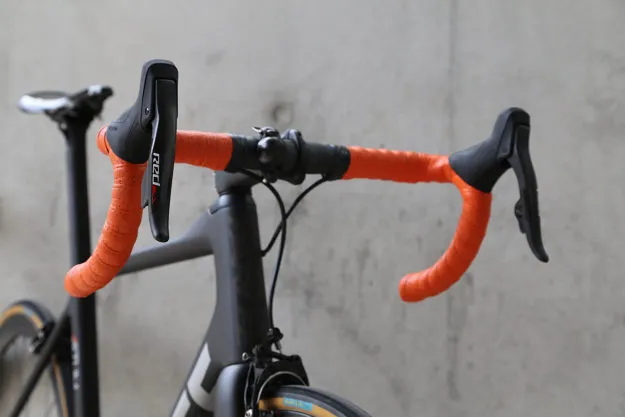
Intuition Be Damned — SRAM eTap Groupset Review
Published:
Updated:
December 20, 2017
July 10, 2024
Is wireless shifting the future of electronic groupsets?
Intuition is a funny thing. For years we have been shifting our rear derailleurs with our right hands and our front derailleurs with our left hands — a continuation from the days of downtube shifters, for those of us who remember and used them.
Electronic gear systems — Shimano’s Di2 and Campagnolo’s EPS; not forgetting Mavic’s Mektronic from back in the day — haven’t changed that, but the arrival of Di2 and EPS was accompanied by a whole heap of patents that attempted to lock up the potential for others to enter the market. SRAM did enough to get around those patents, but in doing so they changed the way we shift. With their new wireless eTap electronic groupset your right hand now equals ‘harder’ and your left hand now equals ‘easier’.
But is this change intuitive; and is eTap a success? We’ve been testing eTap on a few different bikes for a couple of months now — this is what we have found…
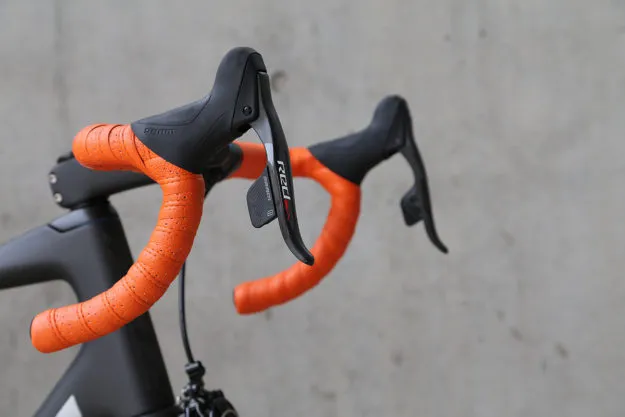
Installation out-of-the-box is really simple. The instructions SRAM include are crystal clear, well-illustrated and easy to follow. The first step is to pair the components so that they talk to each other — which takes no time at all. After the shifting components are mounted, initial setup is done without the chain installed to get the setup in the right ballpark, then fine-tuned with the chain fitted.
There are buttons on the derailleurs themselves to enable you to shift without having to reach up to the levers on your bars during this process, which makes a lot of the adjustment much easier to complete. Overall the installation and setup are easier than any other groupset, and you can’t help feeling like you’ve missed something because it is so straightforward.
With the Parlee pictured here being the third bike this eTap kit has been on, I can confidently confirm it is every bit as easy to switch across bikes as it is to install fresh too.
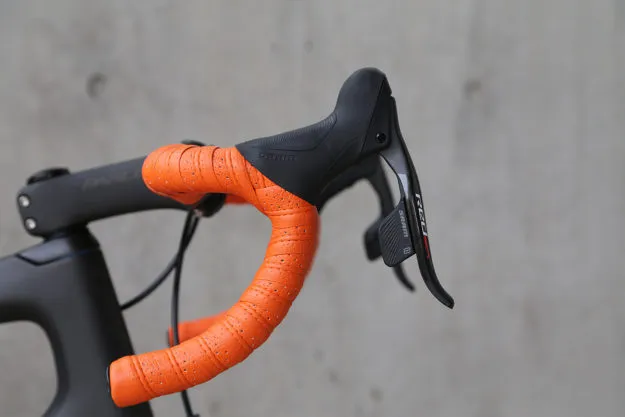
Visually, eTap borrows from SRAM Red in style and design — which makes a lot of sense, given that is SRAM’s flagship mechanical group. In fact SRAM Red has benefitted from eTap’s introduction as the two groups now share the much more attractive, all–black, less graphic-heavy and matte finished chainset (unfortunately not used in this build).
The smooth lever and hood shape and design is carried over from the current SRAM groupsets, albeit with a new finish to the rubber hood cover, a matte lacquer and updated graphics on the lever to match the new chainset. Despite the derailleurs now both enclosing motors and batteries within their forms, the eTap front mech doesn’t look much bigger than Di2 and, although wider, is still slimmer in terms of its physical depth from the frame.
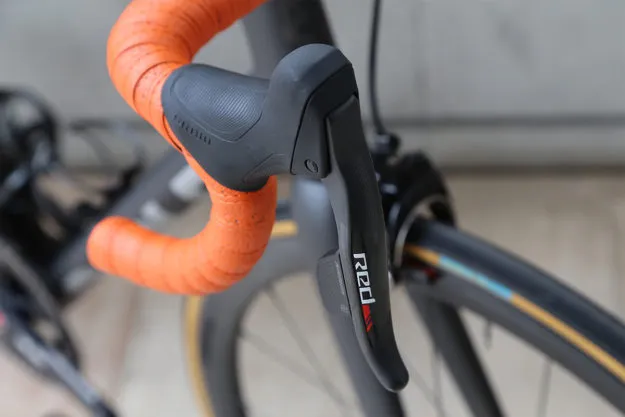
The rear mech isn’t significantly bigger than a Di2 unit either — although the eTap mech is quite distinguishable given how far it hangs behind the mounting position compared to other derailleurs due to the battery being attached to the back of it.
Intuition is defined (by the Apple Dictionary app) as: “the ability to understand something instinctively, without the need for conscious reasoning”. As I wheeled out on my first excited-yet-tentative moments on eTap, tapping my right shifter to progress down the cassette as I picked up pace was as intuitive as cycling gets. So far so good.
But now I need to shift up a couple of cogs to prepare to pull away from a junction. Intuition challenged. PANIC! Wait, no, I just need to tap the left lever. And in that moment, I’m sorted. Ok so there is a little more to it than that as you do need to get used to tapping both levers to shift the front mech, but even that only takes a couple of goes to get comfortable.
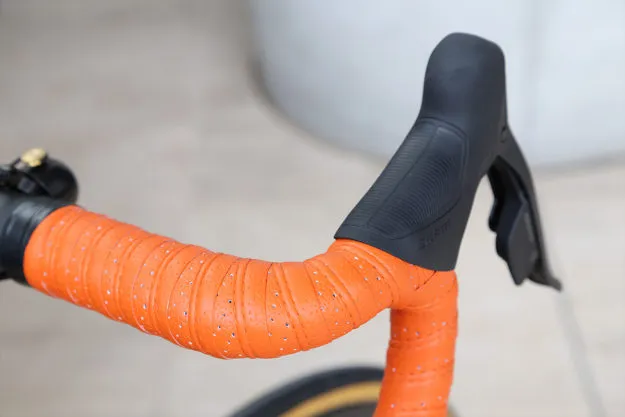
In use, eTap is fantastic. There’s no feeling around to check you’ve got the right button (occasionally a problem with Di2) and you can quickly and easily tap either shifter with any available finger (not an option with EPS), which often saves from having to move hand positions regardless of shift direction. The button touch is light enough that you don’t need much force to activate it but firm enough that miss-shifts aren’t an issue.
Once you are used to pressing both levers to shift the front mech this becomes second nature; and in time you will get used to dumping gears either way on the cassette and simultaneously tapping the opposite lever to initiate a front shift — quite useful for sudden inclines or for punching through the gears and ‘sticking it in the big dog’ at the start of a descent.
Additional shift buttons would be nice, but they weren’t available in Australia at the time of writing. The only negative of any note is that the shift itself is very slightly on the slow side — definitely not enough to be a problem, but noticeable all the same. It’s like being on a mechanical setup where the cable tension is fractionally loose and the shift in one direction is very slightly hesitant as a consequence.
I’m hopeful that this could be resolved with a future firmware update. Speed aside, the shifting is otherwise impeccable front and rear, even despite not running SRAM chainrings or cassette.
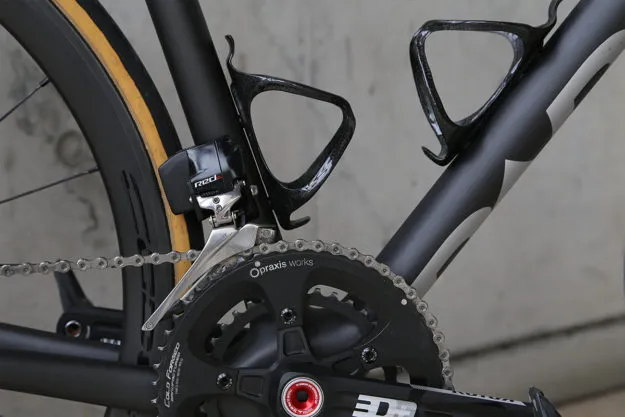
For me, the lever shape is not quite as nice in the hand as the original, pre-Yaw, SRAM Red levers, nor are they quite as nice as Shimano’s Di2 lever range; mainly because I like the ‘knuckle’ at the top of the lever and the two-finger grip that those lever shapes allow.
The button feel, however, is far better than Di2 and — in my opinion at least — even edges out EPS in terms of the firm feel and positive ‘click’ from each shift; so much so that there’s a distinguishable noise of the click as if the spring in the switch is echoing within the lever.
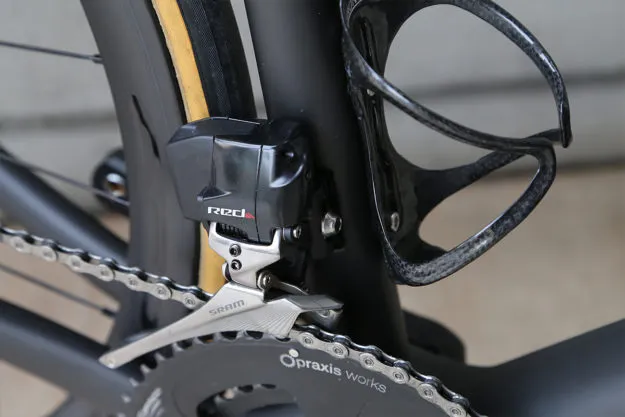
Some other features worthy of note include a genius battery cover which has a ‘switch’ on it to remind you whether a battery is dead or fully charged (and the switch function is firm enough to move that it’d be hard for it to accidentally point to the wrong symbol).
Unlike Di2, and impossible with EPS, is the ability to easily to carry spare batteries — firstly because they’re so small, and secondly because they are interchangeable between front and rear mechs.
As the front mech drains the most power and is likely to die first, you can easily juggle the batteries (or simply switch the dead one) to make the most of the use you get from each and having one spare in your jersey pocket case or saddle bag will mean you can always get home. In addition, once you are home the batteries have a quick charge time, meaning you can refresh a spare battery and top-up another in only a couple of hours.
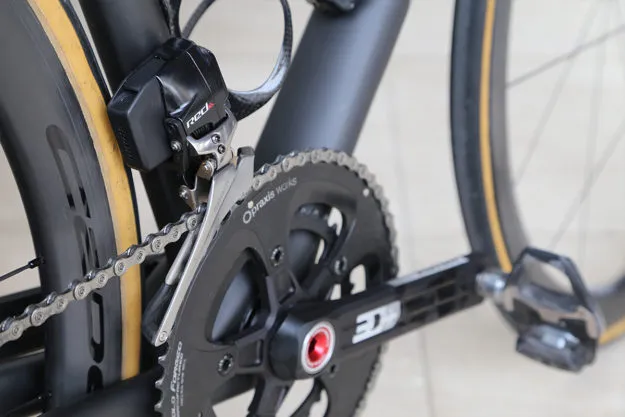
Finally, there’re the remote shifters, called ‘Blips’. As already mentioned, these additional shifters aren’t yet available in Australia so we haven’t been able to test them — but on the assumption that they would be designed to function exactly as the main shifters do, I would expect them to be better than the separate Di2 shift buttons simply on the basis that the Blips will allow you to shift both front and rear derailleurs.
Indications are that the Blips can be mounted pretty much anywhere you want them to be (within reason), and can even be mounted beneath the bar tape. This would also indicate that accidental shifts are unlikely, as taping over a button would otherwise activate a shift. The Blips are the only part of the eTap setup which isn’t wireless (they need to be plugged into the levers), but that’s a minor aside.
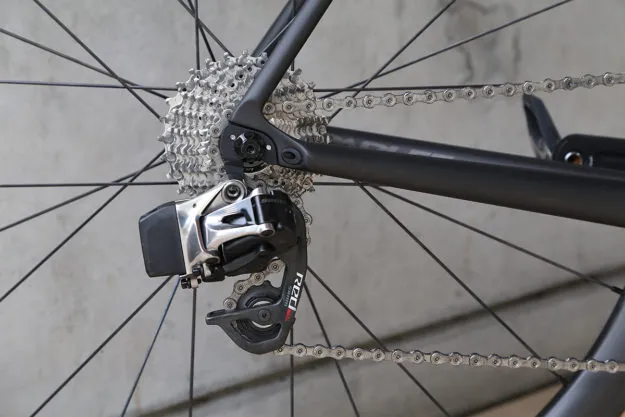
Perhaps the best proof of the pudding is to switch back to a non-eTap bike. Riding Di2 for the first time in a while resulted in some interesting shift activity. In fact, the only reason I didn’t activate a front shift whilst trying to shift to an easier gear was because I pressed the button on the left lever for the position the front mech was already in.
The shift speed versus the ‘slow’ eTap shift was immediately apparent (Di2 absolutely is quicker, there is no doubt), although it was now offset by having to remind myself which button to press to carry out the intended shift on Di2 — meaning the eTap shift probably nets out to be faster, especially with winter gloves on. Perhaps most telling was the fact that I was glad to be back on eTap when I took this Parlee out for the first time.
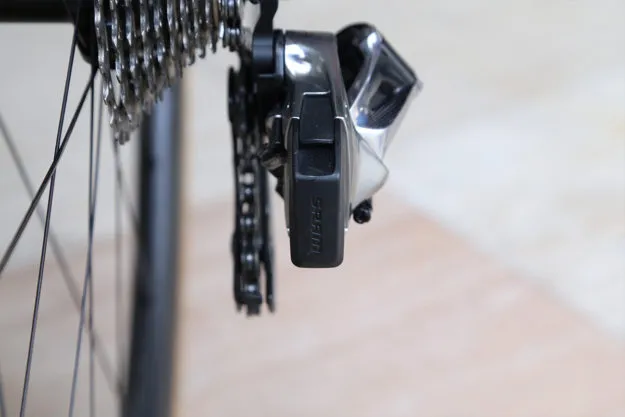
In terms of the future improvements I would be keen to see, a firmware update to quicken the shift speed would probably be top of my list. Again, it’s not a deal-breaker by any stretch, but it is noticeable (and I know I am not the only one to have commented on this) so I think it should be addressed. I would also love to see a cheaper Force version; and, given that the competition offers electronic group sets in their lower end product ranges, it must be coming, surely.

As a mate says, eTap like owning an older supercar: It doesn’t have all the bells and whistles of the latest cars and it may not be as fast — but it looks awesome, works brilliantly and is damn cool! Now that eTap is very soon to be available with hydraulic disc brakes, that could finally be enough to convince me to switch to a disc brake setup on a road bike.
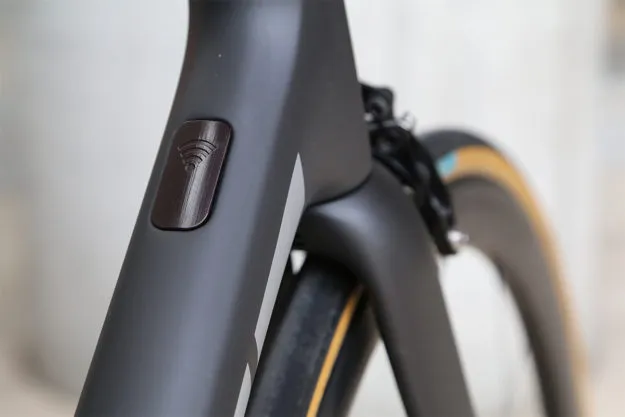
If you need more convincing, the number of eTap-specific frames already being pumped out by the likes of Baum, Firefly and Mosaic; and the number of off-the-peg manufacturers who now show their eTap model as their range topper should make the message clear.
For the Parlee pictured here (Our thanks to Parlee for the loan of this Altum frameset ), it is using a 3D printed prototype of a blank for the cable guide port to make the frame more eTap-specific. Hell, even Richard Sachs has recently built an eTap-specific frame.
Intuition be damned — eTap is the future.
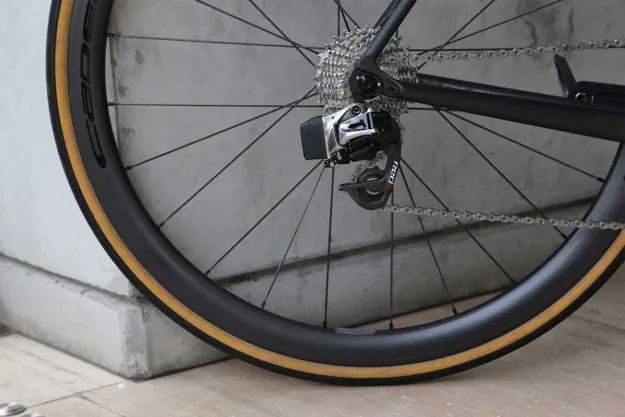
Rich
In my circa 35 years of riding I have only ever taken my bikes to a shop when I needed to ask nicely to borrow a tool that I didn’t have - usually in return for a quantity of beers proportionate to the number of staff who worked there, the value of the tool in question and/or the amount of workstand time I wasted.
The number of bikes I have owned is a number that I don’t want my wife to know. Years in the bicycle industry in various guises interspersed a corporate career, ultimately leading to becoming founder, owner, CEO, spanner monkey and Tea Boy of my own home-based workshop, which is The Best Job in the World; and is where I currently practice a solid amount of Yelling At Bikes.